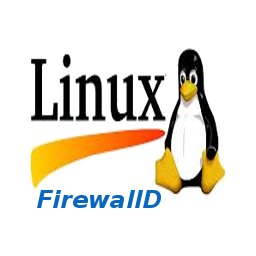Are you trying to enable firewalld in CentOS 7?
This guide will help you.
Firewalld is a complete firewall solution available by default on CentOS and Fedora servers. Enabling it will manage the system’s iptables rules.
Basically, firewalld service implements its firewall policies using normal iptables rules.It accomplishes this by building a management framework using iptables chains.
Most of the rules you are likely to see will be used to create these management chains and direct the flow of traffic in and out of these structures.
Here at Ibmi Media, as part of our Server Management Services, we regularly help our Customers to configure firewall related queries.
In this context, we shall look into how to enable the firewalld on centos7 for our customers.
More about Firewalld?
The firewall is one of the most important features of webservers. Firewalld is a complete firewall solution that manages the system’s iptables rules.
Moreover, it replaces iptables as the default firewall management tool. Normally, firewalld uses the concepts of zones and services.
So, it configures and manages using the firewall-cmd command-line utility. Also, it supports both IPv4 and IPv6 firewall settings.
How to Install and Enable Firewalld on Centos 7 ?
Here, you will see the steps to install and enable the firewalld on centos7 servers.
Usually, Firewalld is installed by default on CentOS 7.
i. However, if it's not we install the package using the below command.
yum install firewalldIt successfully installs the firewalld service on the server.
ii. Then we check if the firewalld service-disabled default on the server. To check so, we use the below command.
firewall-cmd --stateIf the firewalld service is not activated on the server, it returns the result not running. Otherwise, we can see the running status.
iii. To start the Firewalld service and enable it on boot, we use the below command:
systemctl start firewalld
systemctl enable firewalldYou can stop the firewalld service we run:
systemctl stop firewalldNext, to disable the firewalld service on the server:
systemctl disable firewalldAlso to reload a FirewallD configuration, we use the below command:
firewall-cmd --reloadThese are the techniques that can help to start, stop, disable, and enable the firewalld service.
[Couldn't enable firewalld in your Debian Server? We'll help you. ]
Common errors while we Enable firewalld in Centos 7 ?
Here, you will see how to fix a few common firewalld errors.
1. firewall-cmd: command not found
While trying to configure firewall rules on a server, the following error was received:
# firewall-cmd --zone=public --add-port=8080/tcp --permanent
firewall-cmd: command not foundfirewall-cmd is a command-line front-end for firewalld (firewalld daemon), a dynamic firewall management tool.
To fix this error, we need to install firewalld on RHEL/CentOS 7 using yum package manager as follows.
# yum install firewalld
# systemctl start firewalld
# systemctl enable firewalld
# systemctl status firewalld
Failed to issue method call: Access deniedWhile trying to enable firewalld, one of our customers came across the following error:
# systemctl enable firewalld2. Failed to issue method call: Access denied
This error occurs when we try to start or enable a service that is either not installed on the Linux system or we typed an incorrect service name.
We can obtain the list of services by typing:
# systemctl list-units --type=serviceIn order to resolve this we follow the below steps:
i. If the install is not available, run:
# yum install firewalldii. Then we enable firewalld by typing:
# systemctl enable firewalldiii. In order to start firewalld run:
# systemctl start firewalldIn addition check for hanging firewalld processes.
For example,
root 16278 1 4 Jan 21 ? 00:00:00 /usr/bin/python -Es /usr/sbin/firewalld --nofork --nopidKill them and then:
# yum reinstall firewalld
# service unmask firewalld
# service enable firewalld
# service start firewalld[Stuck with any of the firewalld errors? We'd be happy to help you fix them. ]
Conclusion
This article will guide you on steps to enable firewalld on #centos 7 servers for our customers. The firewall is one of the most important features of webservers. The #firewalld supports both IPv4 and IPv6 #firewall #settings.
Never run the iptables service and FirewallD service at the same time! The #iptables service is now provided by a separate package called iptables-services: Stop and disable the firewalld service first. # systemctl stop firewalld.
The firewalld daemon manages groups of #rules using entities called "zones". Zones are basically sets of rules dictating what traffic should be allowed depending on the level of trust you have in the networks your #computer is connected to.
To use FirewallD:
1. Installing and Managing FirewallD.
2. To start the service and enable FirewallD on boot: sudo systemctl start firewalld sudo systemctl enable firewalld.
3. Check the firewall status.
4. To view the status of the FirewallD daemon: sudo systemctl status firewalld.
5. To reload a FirewallD configuration: sudo firewall-cmd --reload.
This article will guide you on steps to enable firewalld on #centos 7 servers for our customers. The firewall is one of the most important features of webservers. The #firewalld supports both IPv4 and IPv6 #firewall #settings.
Never run the iptables service and FirewallD service at the same time! The #iptables service is now provided by a separate package called iptables-services: Stop and disable the firewalld service first. # systemctl stop firewalld.
The firewalld daemon manages groups of #rules using entities called "zones". Zones are basically sets of rules dictating what traffic should be allowed depending on the level of trust you have in the networks your #computer is connected to.
To use FirewallD:
1. Installing and Managing FirewallD.
2. To start the service and enable FirewallD on boot: sudo systemctl start firewalld sudo systemctl enable firewalld.
3. Check the firewall status.
4. To view the status of the FirewallD daemon: sudo systemctl status firewalld.
5. To reload a FirewallD configuration: sudo firewall-cmd --reload.












